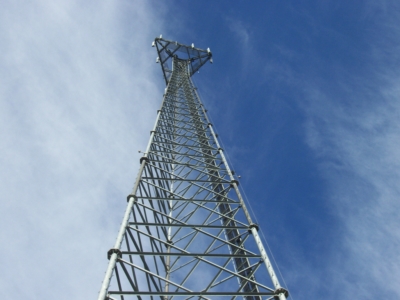Why Is Your Lease Valuable
Why is Your Lease Valuable?
AT&T’s 2016 earnings published to the SEC and on the AT&T Investor Relations website, their profit yielded $16.9 billion of free cash flow (pure profit). That’s $46 million daily profit using cell sites on properties just like yours. Add in Verizon’s $13.6 billion in profit (and we haven’t even added smaller carriers’ profits — T-Mobile and Sprint) you begin to see the picture that your property is extremely valuable for wireless carriers to maintain a wireless system that make them billions of dollars in profit for years to come. The worth of your wireless lease may not be in alignment with the rent you are receiving if you did not have wireless professionals like us on your side to match the carriers’ experts. Let’s us help you determine if you are getting maximum value for your cell site property.
An Essential Gear in the Communications Machinery
 Carriers receive tens of thousands of contacts every year from property owners interested in becoming wireless landlords, but most of their properties do not have the right characteristics for cell site placement. At the beginning of the design process, RF design engineers control the entire cell site placement process. Through computer modeling, where trees, buildings, hills, roads, malls, population concentrations, topology, and many other important population and morphology databases are fed into the signal propagation programs (called Prediction Tools), coverage predictions are then generated. These are generally quite accurate, but they require two important assumptions at every location—precise location and height. Proper location and height are extremely important, as each site must be able to “see” all neighboring sites to hand mobile phone calls from one cell site to another without dropping the call. Once a design is complete, engineers would issue a design search ring, which defines locations by latitude and longitude where they must have the cell sites located for the model to work.
Carriers receive tens of thousands of contacts every year from property owners interested in becoming wireless landlords, but most of their properties do not have the right characteristics for cell site placement. At the beginning of the design process, RF design engineers control the entire cell site placement process. Through computer modeling, where trees, buildings, hills, roads, malls, population concentrations, topology, and many other important population and morphology databases are fed into the signal propagation programs (called Prediction Tools), coverage predictions are then generated. These are generally quite accurate, but they require two important assumptions at every location—precise location and height. Proper location and height are extremely important, as each site must be able to “see” all neighboring sites to hand mobile phone calls from one cell site to another without dropping the call. Once a design is complete, engineers would issue a design search ring, which defines locations by latitude and longitude where they must have the cell sites located for the model to work.
This information is sent to the real estate department, which then sends out zoning specialists to determine if the area is zoneable for a particular height requested. Through this process many potential cell sites identified during the design phase are rejected because they cannot be zoned or are too difficult or time consuming beyond the needs of the business. If a site meets engineering location and height requirements and passes the zonability criteria, the site acquisition specialists are dispatched to negotiate with landlords of these sites. After some months working with various landlords, conducting field tests, and running FAA studies, construction costs are assessed based on known site conditions. In the end, only one site passes all engineering and zoning criteria within any search ring, and that site is selected as the “primary candidate.” That site gets full zoning support and is developed through construction. For the search ring issued in your area, that on-air site that passed all the criteria is YOUR site. The odds were against you, but you basically won the cell site lottery.
What does this mean to you?

Consider a group of sites that are perfectly spaced and performing well as a system. A cell site often has fifty “neighbors” built into its algorithm. It has the ability to hand over calls and receive calls to and from any one of these neighbors depending on many different call pattern conditions. If one site is moved, the other fifty sites now have to be reengineered. To save a few hundred dollars a month, no carrier would subject their optimized system to this much fluctuation. Conclusion: Carriers will not move a cell site purely on rent cost alone.
Carriers’ Real Estate Development
A carrier’s real estate department never wants to move a site. They already have many time-pressured projects, including building new cell sites, managing existing ones, and upgrading existing sites to newer equipment. The last thing they want to do is create more work that nets them nothing new. About 15% of landlords are “difficult” because they are informed and make high demands. They have professionals and insiders working for them. They are the ones that hire us. In practically all cases, carriers just pay and move on. They make this up by negotiating really hard with landlords who do not understand their own position and will cave in to lower rents and lease terms. About 50% of landlords are in this category. About 35% of landlords are “in the middle.” They are not demanding and can’t be pushed around easily, so they get average terms. Which category are you?
Reliable Constant Revenue Stream
As investors look for better returns on their investments, real estate is an asset class that many turn to for portfolio diversification, low risk, good returns, and predictable payments. In return for your lease, investors will offer an up-front payment of 180 times your monthly rent. In return, they ask for thirty to fifty years or even longer in future revenue. After that the monthly rent reverts back to you (if you are still alive) or your heirs and assigns (who you sold the property to or who inherited your property). A number of variables affect the offer price, such as how long you are willing to offer the rent for, the annual escalation rate on your rent, the prevailing interest rate, the underlying wireless carrier (T-Mobile, Verizon, AT&T, and Sprint [to some extent] command the highest offers), and any prevailing rumors or announcements regarding mergers and acquisitions in the marketplace. Rumors of Sprint acquiring Clearwire made Clearwire leases immediately worthless, as investors do not want to own assets that do not have a perceived permanence in their future.
